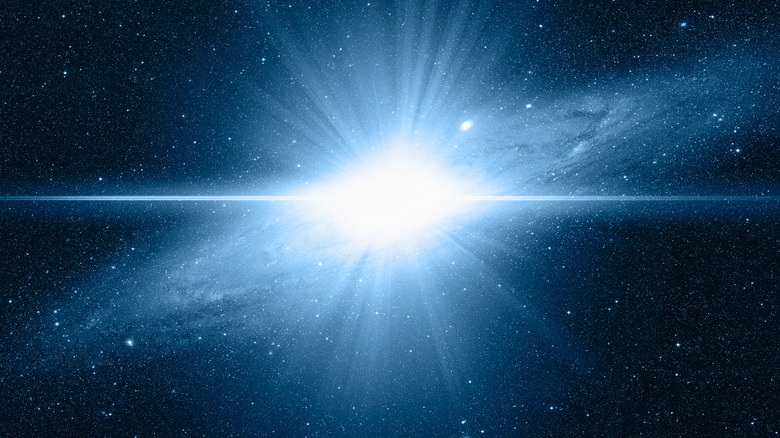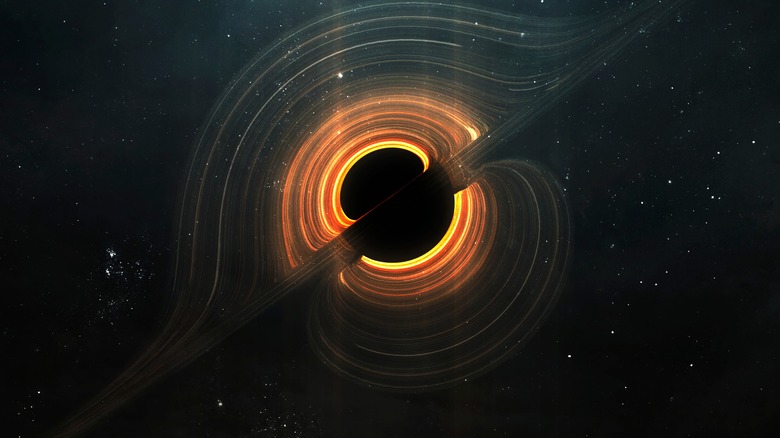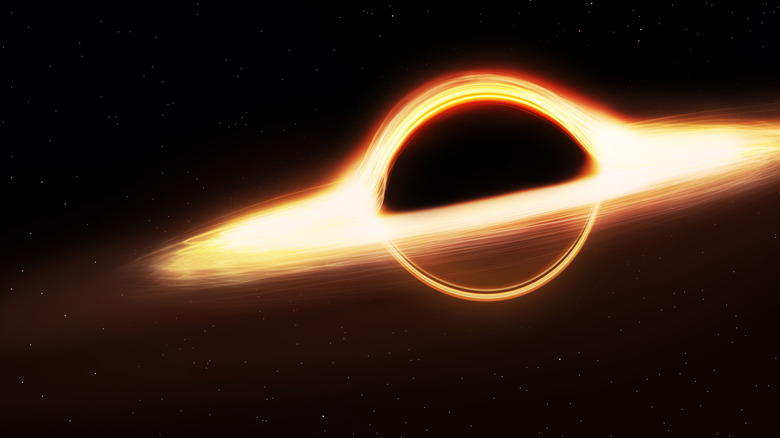How Do Black Holes Die?
Black holes are one of the more well-known features of space, a science fiction staple, and something we still don't know much about. We do know how they form, some of their characteristics, and how they eventually decay away and die.
The gravity produced by a black hole is so immense that light cannot escape its pull and time slows down for objects as they approach the hole's singularity. Because light cannot escape from their pull, we don't actually see black holes. However, we can see their effect on the area around them. Black holes are surrounded by a cloud of superheated dust and gas which ends at something called an event horizon, which is the edge of the black hole itself.
Black holes can also range from something atom-sized to supermassive black holes that contain millions of times the mass of our sun. The gravity of a black hole comes from its density. An atom-sized black hole contains around the same level of mass as a large mountain. NASA says the black hole at the center of our universe is a few million times bigger than Earth but contains around four million times the mass of the Sun.
This is how black holes form
Black holes form when a star dies. Only larger stars become black holes, the sun at the center of our solar system isn't large enough and is destined to become a white dwarf at the end of its life. When a larger star runs out of fuel, it explodes into a supernova, throwing its outer layers into space. What is left of the star after the supernova collapses in on itself and is compressed until it forms an object of zero volume and infinite density. This is what we call a black hole.
The Space Telescope Science Institute says it is impossible to count the number of black holes in the universe, but that one out of every thousand stars will eventually become one. Due to the scale of the observable universe, scientists predict a new black hole is formed about once per second. Most, if not all, galaxies also have a supermassive black hole at their center, and there are around 100 billion observable galaxies.
And this is how black holes die
A black hole can decay and that decay is measured through something called Hawking radiation. The predominant theory is based on the fact that space isn't actually as empty as people believe. On a quantum level, particles constantly pop in and out of existence. Occasionally a couple of particles known as an "antimatter pair" appears. One is made of regular matter, and the other is destructive "anti-matter." These particles usually destroy each other almost instantly, the exception is when they appear on the event horizon of a black hole. A black hole's immense gravity can separate the two particles as soon as they appear. The particle that's sucked into the black hole will chip away at its mass very slightly, while the other shoots off into space where it is detected as "Hawking radiation" (via Livescience)
The black hole eventually dissolves if it does not continuously absorb more material than it loses to rogue particles. This also ties a black hole's lifespan to its size, as a supermassive black hole has more matter than a regular black hole.
An evaporating black hole is not expected to go quietly either, they eventually reach a point where they don't have enough mass left to sustain themselves. Yale University's Priyamvada Natarajan explains that the force emitted by a black hole in its final moments could be similar to "a million nuclear fusion bombs going off in a very tiny region of space." Although it may seem daunting, the energy released at the end of a black hole's life is far from a concern. Although it's incomprehensible by earth standards, Natarajan says it's a fraction of the energy released by a supernova — and supernovas occur far more frequently.


